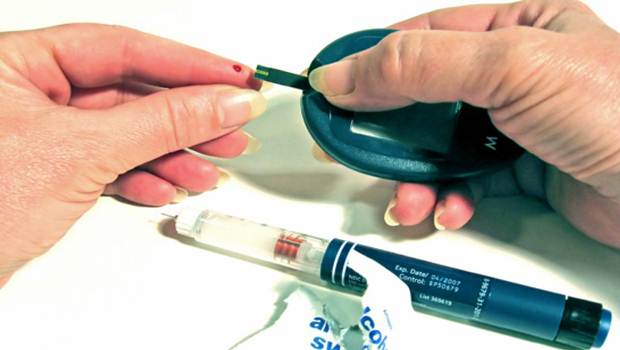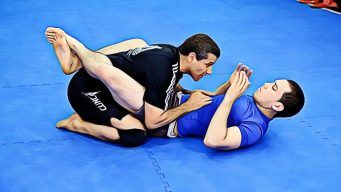
Managing blood glucose during exercise could be a huge challenge. Hypoglycemia happens often during exercise. This is the biggest risk of exercise for those who suffer from diabetes, particularly for those who take insulin. Low or high blood glucose could harm your physical performance as well as mental ability. In this article, from VKool.com, you will discover the connection between exercise and blood sugar levels and why’s and what-to-do’s of managing blood glucose during exercise.
Exercise And Blood Sugar Levels – Steps To Exercise To Control Blood Glucose
1. Understanding Blood Glucose And The Human Body
In order to know how to manage your blood glucose during exercise, you need to know a simple physiology lesson. Think of muscle: the engines within the human body that burn calories and make you move. Like any engine which burns fuel to make it operate, in reality, muscles also need the fuel too. And, with the human being, that fuel is carbohydrate (glucose) and fat.
2. Understanding Exercise

During exercise, the need for fuel enhances and the human body responds accordingly.
- The glucose stored within the muscle is burned fast.
- At the same time, glucose stored within the liver will be released into the bloodstream.
- Fat will be released from the special cells named adipocytes. That fat plus with glucose makes its manner through the bloodstream to the human muscles to be used for fuel.
- When the fuel reaches the muscle, it has to enter through the particular pathways so that the muscles could use it as energy
3. Insulin-Like Effect

On the wall of every muscle cell are particular receptors, similar to doors, which let glucose pass from the bloodstream to the muscle. These doors will not open if they are not unlocked by the insulin. Yet, the good news is that exercise has an insulin-like effect, thereby making insulin work better within your body. During the activity, the doors swing will open, allowing more glucose to break into the muscle to be burned for energy. And, the issue is that when you keep exercising and the glucose keeps leaving the blood, you might end up with the condition of low blood glucose. Sometimes, blood glucose keeps dropping after doing exercise. That is because the glucose in the muscle which was used at the early stage of exercise needs to be replaced. Then, the muscle will continue to take the glucose from bloodstream in order to replace for what was lost.
Occasionally, blood glucose will increase while exercise, particularly vigorous activity, like weight lifting. This is because the human liver boosts glucose at super high rates during high intensity exercise and sometimes the glucose supply is much greater than the human body actually needs. The muscles could not burn the glucose as quickly as the human liver is manufacturing it.
4. Weight Control

When it comes to the link between exercise and blood sugar levels, people with diabetes might concern about it more specifically. We cannot deny the benefits of exercises, particularly on weight loss. However, exercise-induced hypoglycemia should be paid attention to. The question is, “How to exercise if I have to eat in order to take control of my blood sugar every time I exercise?” This might be a fair question. After all, who wants to gain extra weight from exercise? In fact, the good news is that blood sugar could be managed efficiently for exercise.
5. What Occurs To Blood Sugar Levels During Exercise?

Muscles can hold enough energy stores for a short bout of activity. Then, they base on the blood sugar, the increased blood supply to deliver oxygen, and other nutrients to produce more energy. The human body will burn sugar in the blood, and then calls for the liver to provide stored glucose to keep up with energy needs. This will lead to fluctuations within the blood sugar upon exercising.
6. How To Exercise To Lower Your Blood Sugar Levels?

Diabetics! It is never too late to reap the benefits of exercise, whether you are 45 or 85. First of all, it simply makes you feel good to move. By being more active, you could also reduce your blood glucose to keep diabetes under your control.
It is not necessary for you to run a marathon to get good results. Just swimming, walking, and playing with your kids are great ways to get moving.
Below are some tips for you to get started:
a. Make A Plan

If you are just starting out, ask your doctor which exercise is suitable for you. Ask your doctor if you need to change your diabetes medicine before you hit the pool or the trail.
Then, you think about what you will love most. In fact, you will be more likely to stick with the activities you like. Here are some suggestions:
- Walk indoors and outdoors in a mall or on a track
- Join in a dance class
- Swim or join in water aerobics class
- Try tai chi or yoga
- Play badminton or tennis
- Stretch
- Take fitness class
- Do yard chores, housework, or gardening
- Practice resistance training with elastic bands or lightweights
By doing moderate exercise, such as walking, you will increase your heart beat a little faster and breathe a little harder. Your own muscles will use more the sugar within your blood stream and over time, this could lower your blood sugar levels. Also, it makes the insulin in the body work much better. These benefits will happen for hours after your workout or walk.
Do not overdo it. Strenuous exercise could sometimes enhance blood sugar temporarily after you quit exercising while intense exercise could cause the human body to produce more stress hormones, leading to an enhancement of blood sugar.
Check out: how to manage stress effectively
b. Set A Specific Schedule

It is suggested that the best time to get moving might be after a meal. However, it is better for you to ask your doctor about the best time to exercise for your own case. Take your dog for a walk after breakfast and dinner as well. Or, you join in a yoga class or a round of tennis after having lunch.
In order to stay motivated, you can ask your family members or friends to come along. Normally, you will not skip your schedule when other people are watching and counting on you. In fact, company could make it more fun, too.
c. Get Ready

- You should wear comfortable, well-fitting shoes and cotton socks which do not rub. The right footwear could prevent blisters that can become serious infections for some people with diabetes.
- You need to check your own blood sugar before taking a workout. If it is below 100, consult your doctor if you need to consume a snack before.
- Carry a glucose tablets or snack if your blood sugar gets low
- Take a large amount of water before, during and after working out
- Wear your diabetes ID bracelet or necklace while exercising
d. Go!

Begin exercising for several days each week and then slowly increase the frequency from there. You should try a 10-minute walk 3 days per week. And, on the two other days, you should stretch for about 5 minutes. Steadily add 5-10 minutes of exercising each day. Generally, a 30-minute of moderate exercise like walking most days of the week will be the best.
When getting exercise, you should write down how long you exercised and the statistics of your blood sugar levels just before and after workout. After a certain amount of time, you will see how exercise can improve your blood sugar and your overall health as well.
The advice is that you should take it slowly at the beginning and try listening to your own body. When get familiar with the exercise, you could begin to make your exercise regime more challenging. You might be surprised at what you could do and how much you love it.
e. Meet The Challenge

There is no question that controlling your blood sugar level during exercise could be a challenge, yet it could be done if you follow the steps above. There is a close connection between exercise and blood sugar levels and you could take many benefits by exercising, not mention to your controlled blood glucose – reduced risk of heart disease and stroke, weight control, improved mood, and so on. One of the most effective ways to control your blood sugar during exercise is to test regularly. Always remember that it is necessary for you to check in with your doctor or diabetes educators for assistance.
Above are some basic information about exercise and blood sugar levels and some useful tips to help you get exercising while still controlling blood glucose effectively. Wish you good luck with exercise!
If you have any idea about the topic about exercise and blood sugar, simply share your thoughts with us by dropping words below the post. We will feedback soon.
Want More Content Like This In Your Inbox?
- Iron Dolls PDF Review – Is The Ebook Beneficial?
- Heartburn No More Review – Will Jeff’s Guide Be Useful?
- How to treat Lyme disease naturally without antibiotics
- Top 44 Best Foods To Increase Blood Platelets Count
- 11 Ways on how to get rid of blotchy skin on face & legs
- 23 Health & nutritional benefits of strawberry
- Urinate Now Review – Is The Method To Treat Shy Bladder Of Jake Rubin Effective?
- How to prevent saggy breast during weight loss naturally






















 Benefits Of Spices And Herbs In Cooking Food Are Revealed
Benefits Of Spices And Herbs In Cooking Food Are Revealed  Why is junk food bad for you? – 11 reasons
Why is junk food bad for you? – 11 reasons  Top 10 Amazing Uses Of Toothpaste
Top 10 Amazing Uses Of Toothpaste  Top 16 Best Artery Cleansing Foods For Healthy Heart
Top 16 Best Artery Cleansing Foods For Healthy Heart  15 Healthy Easy Atkins Diet Recipes For Atkins Diet Followers
15 Healthy Easy Atkins Diet Recipes For Atkins Diet Followers  20 Natural Treatments For Psoriasis Of The Skin & Psoriatic Arthritis
20 Natural Treatments For Psoriasis Of The Skin & Psoriatic Arthritis  14 Natural Treatments For Low Platelets In Infants And Adults
14 Natural Treatments For Low Platelets In Infants And Adults  6 Ways How To Use Apple Cider Vinegar For Acid Reflux
6 Ways How To Use Apple Cider Vinegar For Acid Reflux  Lose The Back Pain Book Review – Is Dr. Robert’s Guide Useful?
Lose The Back Pain Book Review – Is Dr. Robert’s Guide Useful?  Top 15 Natural Motion Sickness Treatment Tips For Adult
Top 15 Natural Motion Sickness Treatment Tips For Adult